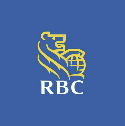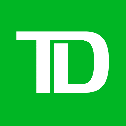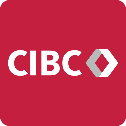CANADIAN BANKS: TAX-LOSS SELLING STRATEGIES FOR 2023
CANADIAN BANKS: TAX-LOSS SELLING STRATEGIES FOR 2023 2023 has been a volatile year for Canada’s banks. Year-to-date, as at November 15, 2023, the Canadian banks, as represented by the Solactive Equal Weight Canada Banks Index (the “Index”), are down -0.67%. Compared to its 2023 high on February 13th, the Index is down -10.69%, as at November 15, 2023. The decline is even more significant when you consider the fact that the Index achieved its all-time high in February 2022 – just a little under two years ago.
- QUICK FACTS: Canada’s Banks include several major institutions, collectively known as the “Big Six”. These are the Royal Bank of Canada (RBC), Toronto-Dominion Bank (TD), Bank of Nova Scotia (BNS), Bank of Montreal (BMO), Canadian Imperial Bank of Commerce (CIBC) and National Bank (NB). Together, these “Big Six” banks comprise approximately 95 percent of the sector’s total market share and represent approximately 25% of the total market capitalization of the S&P/TSX 60™ Index.
There are a few potential reasons behind the volatility for Canadian banks in 2023:
- Rising Rates: While a rising interest rate environment can be beneficial for bank earnings, it can also result in greater exposure to consumer debt defaults. Rising rates can also lead to greater mortgage debt risks as well as lower growth in new mortgages. The quick pace of Bank of Canada rate hikes – the fastest in its history – might mean all of its effects have not necessarily been felt yet.
- Fear of Contagion: Since the collapse of several U.S. regional banks in March 2023, including Silicon Valley Bank, investors have grown more cautious about the potential for contagion within the U.S. banking sector and potential knock-on effects for Canadian banks as well.
- Residential Vulnerability: Canada’s residential real estate market appears to be undergoing a correction currently, with fears of deeper losses and mortgage defaults. Many of the Canadian banks have significant mortgage exposure on their books, which could undermine stability.
While these factors might be contributing to current volatility, there are plenty of potential reasons to be optimistic about Canadian banks. Those who are worried about a “hard-landing” recession and economic pains would do well to remember that Canadian banks were some of the best-performing globally during the 2008/2009 financial crisis. Other macroeconomic factors, including immigration and investment, are also net positive contributors to the outlook for Canadian banks. There’s also the matter of dividends: Canada’s Big Six Banks are offering dividend yields between 4% to 6.27% currently – an attractive dividend rate for stocks with the potential for future upside as well as conditions improve.
Current Canadian Bank Dividend Rates

4.51

4.58%

7.02%

5.31%

6.50%

4.51%
Source: Bloomberg, as at November 15, 2023
Ultimately, while 2023 has likely not resulted in gains this year for investors in Canadian Banks, there may be reasons to consider remaining invested or seeking entry into Canadian banks at current valuations. For investors who want to remain invested in Canadian banks, while still creating a potential net benefit for their overall portfolio performance, it might make sense to consider tax-loss selling.
TAX-LOSS SELLING 101
Simply put, tax-loss harvesting, or tax-loss selling, is a strategy that can help mitigate capital gains taxation. The practice of tax-loss selling involves deliberately selling a stock or fund at a capital loss, where the price at which it is sold is below the adjusted cost base or original purchase price. The aim is to use the loss realized from such a sale to offset any capital gains realized on other investments during the year.
While losing money on an investment is never ideal, a realized capital loss can be useful for those who invest outside of a registered account and are looking for a strategy that will help them reduce taxes to be paid on capital gains.
Generally, a realized capital loss can be used to offset realized capital gains in the current year, or it can be carried back as far as three years. It can also be carried forward indefinitely.
There is a caveat, however: Canadian tax law requires that a seller (or an affiliated person, such as a spouse) may not purchase the same security (or identical security) as the one on which they are claiming a loss within the 30 calendar days before or after the sale of the security to be able to claim the full amount of the capital loss on the position.
This is where ETFs may come in handy. You could sell a stock or fund to realize a capital loss and then, during the 30-day waiting period, invest the proceeds in an ETF that tracks that stock or fund’s industry, sector, or asset class. After the 30-day waiting period, you could keep the ETF, or sell it and switch back to the security you originally sold to realize the capital loss.
An identical security is so similar to another in substance and structure that the Canada Revenue Agency (CRA) does not recognize a difference between the two, including, but not limited to, new and old securities issued by a corporation that has undergone reorganization.
Investors are rightfully hesitant to sell securities at a loss because many typically expect the valuations of a security or fund to turn around following a decline. However, investors don’t have to meaningfully exit their exposure when using the tax-loss selling technique.
Consider that, at the time of this writing, Canadian banks, as represented by the Solactive Equal Weight Canada Banks Index, are down -0.67% on a year-to-date basis. Many investors are likely sitting on some losses, either in a position on a Canadian bank ETF or in one of the “Big Six” Canadian Bank stocks. Some investors may hesitate to exit long-term positions in the index or its underlying stocks. An investor, depending on when they originally bought a position in a Canadian bank ETF or one of its underlying holdings – and at what cost – may be able to sell that security to crystalize a capital loss and still maintain some highly correlated exposure to the original security.
IMPORTANT CONSIDERATIONS FOR TAX-LOSS SELLING
- Tax-loss selling can only be applied to investments sold within non-registered accounts.
- “Identical” securities are not eligible; however, ETFs that offer similar exposure but with different
management strategies could be eligible. - Consider the “Inclusion Rate”, your allowable capital loss for the reported year. Since 2001, the inclusion rate has been ½ (50%).
- To accumulate a loss position, tax-loss selling must be exercised within the same calendar year that the loss occurred.
STAYING LONG, IMPROVING TAX POSITION
For investors seeking to utilize a tax-loss selling strategy, Canadian ETFs provide ample selection to allow investors to exit a position in one ETF and buy a corresponding ETF with similar exposure. By doing so, investors can potentially “harvest” capital losses while also maintaining exposure to key long-term sectors.
For investors considering tax-loss harvesting, there are a number of Canadian bank-focused strategies traded on the Toronto Stock Exchange (TSX). At Global X Investments Canada Inc. (“Global X”), we’re proud to offer five different ways to get exposure to the Canadian Banks, as part of our Equity Essentials suite of ETFs. Below, we’ve explained each of the different ways to get exposure to Canadian banks using our suite and the corresponding ETF. In addition, many of the ETFs listed below could also represent a potential switch for tax-loss selling, as they offer different strategies and overlays when compared to traditional index-based approaches.
- Index Equity Exposure: The most basic and popular way to invest in Canadian banks is through a traditional index benchmark ETF. These ETFs provide direct exposure to these benchmarks all at competitively low management fees. Global X provides traditional index equity exposure to Canadian Bank Equity Essentials through the Solactive Canada Equal Weight Banks Index. For investors seeking index equity exposure, through our Canadian Bank Equity Essentials, consider the Global X Equal Weight Banks Index ETF (HBNK) (formerly Horizons Equal Weight Banks Index ETF). Until July 31, 2024, HBNK will be available to investors at an effective management fee of 0% and is expected to have a 0% management expense ratio (MER) for the duration of the rebate period. Following the year-long rebate period, ending on July 31, 2024, HBNK will continue to have a low management fee of 0.09%.
- Tax-Efficient Index Exposure: Global X offers products that can provide exposure to all of the major three Equity Essential benchmarks through our Total Return Index (TRI) family of ETFs, including Canadian bank equities. The TRI ETFs are tax-efficient, index-tracking ETFs that provide exposure to a range of equity and fixed-income benchmarks within a corporate class structure. TRI ETFs are not expected to make taxable distributions, which can offer distinct advantages if held in taxable or non-registered accounts and mean that an investor is generally only expected to be taxed on any capital appreciation of the ETF if, and when, the shares of their ETF are sold. TRI ETFs can offer a greater after-tax return on investment when held in a non-registered account, compared to a traditional, physically-replicated index ETF. For investors seeking tax efficiency, consider core index exposure to our Canadian Bank Equity Essentials, through the Global X Equal Weight Canada Banks Corporate Class ETF (HEWB) (formerly Horizons Equal Weight Canada Banks Index ETF).
- Lightly Levered “Enhanced” Index Exposure: Global X offers ETFs that provide approximately 1.25 times (125%) exposure to underlying indices, including the Solactive Canada Equal Weight Banks Index. These ETFs invest in the underlying equity index ETF and then use a modest amount of leverage to enhance both the return profile and the income generated by the underlying ETF exposure. For investors targeting growth, consider enhanced index exposure to our Canadian Bank Equity Essentials, through the Global X Enhanced Equal Weight Banks ETF (BNKL) (formerly Horizons Enhanced Equal Weight Banks Index ETF).
- Covered Call ETFs: Global X offers two options for covered call exposure to Canadian Bank equities. These ETFs invest in an equity index strategy that provides exposure to an underlying Canadian bank benchmark. An experienced options strategy team then writes covered calls up to 50% of the underlying equity exposure, at the Manager’s discretion, which can increase the amount of income generated by the strategy. Historically, this income gets paid out monthly. For investors targeting yield, consider covered call exposure to Canadian Banks through the Global X Equal Weight Canadian Bank Covered Call ETF (BKCC) (formerly Horizons Equal Weight Canadian Bank Covered Call ETF).
- Lightly Levered “Enhanced” Covered Call Exposure: We offer an “enhanced” Canadian Banks covered call strategy that provides approximately 1.25 times (125%) exposure to the underlying covered call ETF. The use of a modest 1.25 times leverage should potentially increase the return potential of the underlying equity exposure and enhance the monthly distribution potential. For investors targeting growth and yield, consider enhanced index exposure through the Global X Enhanced Equal Weight Canadian Banks Covered Call ETF (BKCL) (formerly Horizons Enhanced Equal Weight Canadian Banks Covered Call ETF).
| ETF Name | Ticker | Equity Exposure | Mgmt. Fee1 | |
| Core | Global X Equal Weight Banks Index ETF | HEWB | Tax-Efficient Exposure to Canada’s Big Six Banks | 0.25% |
| Global X Equal Weight Banks Index ETF | HBNK | Index Exposure to Canada’s Big Six Banks | 0.00%2 | |
| Targeting Yield | Global X Equal Weight Canadian Bank Covered Call ETF | BKCC | Covered Call Exposure to Canada’s Big Six Banks | 0.39%3 |
| Targeting Growth | Global X Enhanced Equal Weight Canadian Banks ETF | BNKL | 1.25 times Index Exposure to Canada’s Big Six Banks | 0.35% |
| Targeting Yield & Growth | Global X Enhanced Equal Weight Canadian Bank Covered Call ETF | BKCL | 1.25 times Covered Call Exposure to Canada’s Big Six Banks | 0.65% |
1Plus applicable Sales Tax
2Annual management fee rebated by 0.09% to an effective management fee and management expense ratio (MER) of 0% until July 31, 2024
3Annual management fee reduced from 0.65% to 0.39%, effective July 6, 2023
*Important Note: As highlighted above, “identical” strategies are typically not viewed as eligible for tax-loss selling strategies. This means that a switch from a traditional index ETF that uses the same index as another traditional index ETF offered by another provider may not satisfy the stated requirements. However, ETFs that offer exposure to the same underlying index but utilize different strategies as part of their mandate, including tax-advantaged, leverage and covered calls, would likely qualify for tax-loss switches.
KEY REASONS TO CONSIDER TAX-LOSS SELLING ON THE CANADIAN BANKS
- There Could Be More Upside than Downside in Store for Canadian Banks: While weak performance has been the story for Canadian banks in 2023, there are several factors that could signal that there is more upside than downside in store for the asset class in 2024 and beyond.
- Winter (and the end of the Year) is Coming: If you’d like to harvest tax losses, tax-loss selling must be exercised in the same year that the loss occurred, and so, the selling transaction must be settled before the last business day of the year, falling on December 30, 2023. With Q4 2023 in full swing, there is a limited amount of time remaining to exercise a tax-loss sale.
- Access a Potentially Better Way to Get Canadian Banks Exposure: With five different ways to invest in Canadian Banks with Global X Funds, you can take advantage of this tax-loss selling opportunity to get exposure to Canadian Banks with potentially greater yield, income, leverage or tax-efficiency, depending on the selected ETF.
INVESTMENT OBJECTIVES
| Ticker | ETF Name | Investment Objective |
| HBNK | Global X Equal Weight Banks Index ETF | HBNK seeks to replicate, to the extent reasonably possible and net of expenses, the performance of an index of equal-weighted equity securities of diversified Canadian banks (currently, the Solactive Equal Weight Canada Banks Index). |
| HEWB | Global X Equal Weight Canada Banks Index ETF | HEWB seeks to replicate, to the extent possible, the performance of the Solactive Equal Weight Canada Banks Index (Total Return), net of expenses. The Solactive Equal Weight Canada Banks Index (Total Return) is an equal weight index of equity securities of diversified Canadian banks. |
| BNKL | Global X Enhanced Equal Weight Banks Index ETF | BNKL seeks to replicate, to the extent reasonably possible and net of expenses, 1.25 times (125%) the performance of an index of equal-weighted equity securities of diversified Canadian banks (currently, the Solactive Equal Weight Canada Banks Index). BNKL will use leverage to seek to achieve its investment objective. Leverage will be created through the use of cash borrowings or as otherwise permitted under applicable securities legislation. |
| BKCC | Global X Equal Weight Canadian Bank Covered Call ETF | BKCC seeks to provide, to the extent possible and net of expenses: (a) exposure to the performance of an index of equal-weighted equity securities of diversified Canadian banks (currently, the Solactive Equal Weight Canada Banks Index); and (b) monthly distributions of dividend and call option income. To mitigate downside risk and generate income, BKCC will employ a dynamic covered call option writing program. |
| BKCL | Global X Enhanced Equal Weight Canadian Banks Covered Call ETF | BKCL seeks to provide, to the extent reasonably possible and net of expenses: (a) exposure to the performance of an index of equal-weighted equity securities of diversified Canadian banks (currently, the Solactive Equal Weight Canada Banks Index); and (b) high monthly distributions of dividend and call option income. To generate income, BKCL will be exposed to a dynamic covered call option writing program. BKCL will also employ leverage (not to exceed the limits on the use of leverage described under “Investment Strategies” in the ETFs prospectus) through cash borrowing and will generally endeavour to maintain a leverage ratio of approximately 125%. |
DISCLAIMERS
Commissions, management fees, and expenses all may be associated with an investment in products (the “Global X Funds”) managed by Global X Investments Canada Inc. The Global X Funds are not guaranteed, their values change frequently and past performance may not be repeated. Certain Global X Funds may have exposure to leveraged investment techniques that magnify gains and losses which may result in greater volatility in value and could be subject to aggressive investment risk and price volatility risk. Such risks are described in the prospectus. The prospectus contains important detailed information about the Global X Funds. Please read the relevant prospectus before investing.
Global X Total Return Index ETFs (“Global X TRI ETFs”) are generally index-tracking ETFs that use an innovative investment structure known as a Total Return Swap to deliver index returns in a low-cost and tax-efficient manner. Unlike a physical replication ETF that typically purchases the securities found in the relevant index in the same proportions as the index, most Global X TRI ETFs use a synthetic structure that never buys the securities of an index directly. Instead, the ETF receives the total return of the index by entering into a Total Return Swap agreement with one or more counterparties, typically large financial institutions, which will provide the ETF with the total return of the index in exchange for the interest earned on the cash held by the ETF. Any distributions which are paid by the index constituents are reflected automatically in the net asset value (NAV) of the ETF. As a result, the Global X TRI ETF receives the total return of the index (before fees), which is reflected in the ETF’s share price, and investors are not expected to receive any taxable distributions.
BNKL and BKCL (or the “Enhanced ETFs”) are alternative investment funds within the meaning of the National Instrument 81-102 Investment Funds (“NI 81-102”) and are permitted to use strategies generally prohibited by conventional mutual funds, such as the ability to invest more than 10% of their net asset value in securities of a single issuer, the ability to borrow cash, to short sell beyond the limits prescribed for conventional mutual funds and to employ leverage of up to 300% of net asset value. While these strategies will only be used in accordance with the investment objectives and strategies of the Alternative ETFs, during certain market conditions they may accelerate the risk that an investment in ETF Shares of such Alternative ETF decreases in value. The Alternative ETFs will comply with all requirements of NI 81-102, as such requirements may be modified by exemptive relief obtained on behalf of the ETF.
The information contained herein reflects general tax rules only and does not constitute, and should not be construed as tax advice. Investors’ situations may differ from those illustrated. Investors should consult with their tax advisors before making any investment decisions.
Certain statements may constitute a forward-looking statement, including those identified by the expression “expect” and similar expressions (including grammatical variations thereof). The forward-looking statements are not historical facts but reflect the author’s current expectations regarding future results or events. These forward-looking statements are subject to a number of risks and uncertainties that could cause actual results or events to differ materially from current expectations. These and other factors should be considered carefully and readers should not place undue reliance on such forward-looking statements. These forward-looking statements are made as of the date hereof and the authors do not undertake to update any forward-looking statement that is contained herein, whether as a result of new information, future events or otherwise, unless required by applicable law.
This communication is intended for informational purposes only and does not constitute an offer to sell or the solicitation of an offer to purchase investment products (the “Global X Funds”) managed by Global X Investments Canada Inc. and is not, and should not be construed as, investment, tax, legal or accounting advice, and should not be relied upon in that regard. Individuals should seek the advice of professionals, as appropriate, regarding any particular investment. Investors should consult their professional advisors prior to implementing any changes to their investment strategies. These investments may not be suitable to the circumstances of an investor.
All comments, opinions and views expressed are generally based on information available as of the date of publication and should not be considered as advice to purchase or to sell mentioned securities. Before making any investment decision, please consult your investment advisor or advisors.
Published December 8, 2023
Categories: Articles, Insights
Topics: Canadian Banks